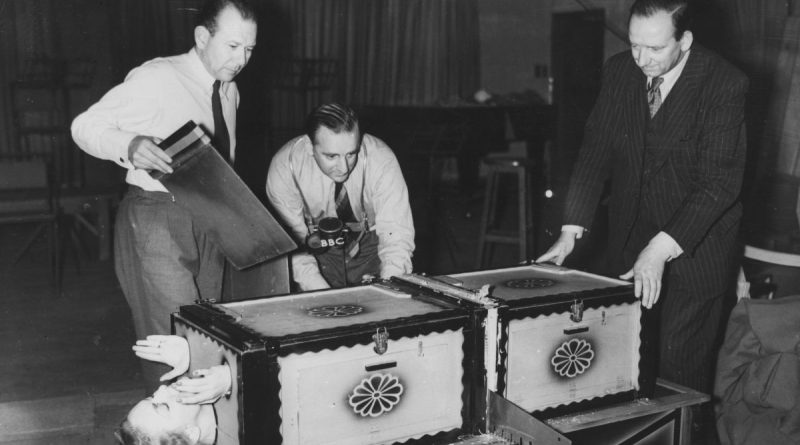How the trick of the woman cut in two, one of the most famous acts of magic in history, emerged 100 years ago | The State
As befits any act of magic, its origins are somewhat mysterious.
But, although there are versions that maintain that the trick comes from ancient Egypt, and others that it was first performed before Pope Pius VII at the beginning of the 19th century, there is a general consensus that they have little foundation.
What is documented is that 100 years ago the British magician P.T. Selbit was the first who introduced an assistant in a wooden drawer as part of his act, closed the drawer and proceeded to saw it in two, before a shocked audience.
It happened at the Finsbury Park Empire theater in London, January 17, 1921.
The woman split in the middle trick would become a boom in the 1920s and become one of the most iconic magic tricks of all time.
A century later, it is still part of the repertoire of many illusionists, although the act today often differs considerably from the one with which Selbit fascinated his audience.
Sawn woman
The act that Selbit called “Sawing a woman”, consisted of introducing an assistant into a wooden box a little bigger than a coffin.
The woman entered bound hands and feet. Selbit closed the box, keeping the woman out of sight.
Then he would take a saw and start sawing the drawer in the middle.

The trick ended when he opened the drawer again, revealing that the assistant was still intact.
In the many imitations that followed, the act would become even bolder, with special drawers revealing the head, hands, and feet of the attendant who was supposedly mutilated.
Eventually the drawer was not used directly, and the assistants were “sawed” in plain sight.
But to P.T. Selbit -whose real name was Percy thomas tibbles and he used a version of his surname turned upside down as his stage name – not only is he credited with being the first to carry out the act of the sawn woman in public.
It is also considered that with his trick he scored a new era of illusionism that, in addition, had important cultural repercussions.
The role of women
According to American magic expert Jim Steinmeyer, who has written extensively on the history of the profession, the enormous success of Selbit’s new trick had not only to do with his wit, but also with his timing.
Steinmeyer argues that the public, who had been psychologically beaten after the First World War (1914-18), was tired of traditional magic tricks and they longed for something new, to surprise them.
In his book Hiding the Elephant: How Magicians Invented the Impossible (“Hiding the Elephant: How Magicians Invented the Impossible”), Steinmeyer emphasizes that Selbit’s show also set a new trend: the attractive and vulnerable wizard’s assistant.

Until then, it was common for both men and women to assist magicians in their acts.
But the voluminous dresses of the Victorian era made it difficult for a woman to participate in an illusion that required her to enter a confined space, such as a drawer.
The revealing new fashion of the ’20s changed that, making it common to include attractive women showing off their legs at shows.
Steinmeyer says that after the success of Selbit’s trick “the image of the woman in danger became a specific fashion in entertainment“.
Suffragettes
Some argue that there was another reason related to women that explains why this new trick became so popular.
One of the hottest topics in the UK of 1921 was the women’s suffrage.
After decades of struggle, the women’s movement suffragettes, led by Emmeline Pankhurst, had successfully passed a law in 1918 allowing women over 30 to vote under certain circumstances.
While for suffragettes it was not enough – they continued to demand the equal vote without conditions until it was obtained in 1928 – an important part of society opposed women being able to vote.

According to Noel Britten, president of The Magic Circle, one of the oldest magic clubs, the controversy over women’s suffrage played a part in the popularity of Selbit’s trick.
“For every person who thought it was great for women to get the vote, were there other people who thought it was great to put a woman in a box and cut her in half?” He told The Guardian newspaper.
The truth is that the Selbit fueled the controversy.
Academic Naomi Paxton, head of The Magic Circle’s office of equality and diversity, tells how the magician invited Christabel Pankhurst, daughter of Emmeline and another famous suffragist, to be his assistant during the act of the sawn woman.
It happened after Pankhurst published an ad in a newspaper seeking “paid and apolitical work.”
Pankhurst, unsurprisingly, declined the offer.
Elusive fame
Despite the enormous popularity of Selbit’s novel show, the British magician failed to capitalize on his fame.
Mainly, because others took his idea and even improved it.

One of these emulators was the American magician Horace Goldin, who, months after Selbit presented his act in London, created his own version for the public in his country.
Goldin was the first to show the head, hands and feet of the assistant during the illusion.
But he also had another genius: patented his act, preventing others from imitating him.
Thus, when Selbit began a tour of the United States to present his show that had been so successful in the United Kingdom, he found that he could not even use the original name of the gimmick.
Goldin had patented the title “Sawing a Woman” and several others like it. In the end, the British magician had to settle for calling his famous trick “The Divided Woman,” which had far less impact.
Although he tried to sue Goldin, the court determined that the American’s trick was different enough to be considered a different one.
This surely explains why few of us have heard of P.T. Selbit, even though his magic act is still popular a century later.
Now you can receive notifications from BBC Mundo. Download the new version of our app and activate them so you don’t miss our best content.


